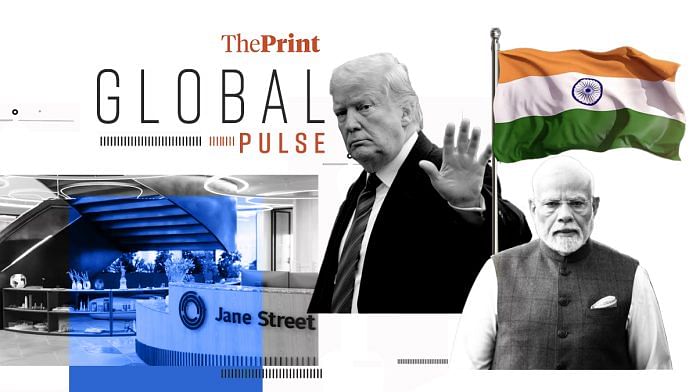New Delhi: Four strategic policy heavyweights—former foreign secretary Nirupama Rao, Executive Director of Observer Research Foundation America Dhruva Jaishankar, Centre for a New American Security’s Lisa Curtis and Carnegie Endowment for International Peace’s Ashley J. Tellis—debate India’s role in a dynamic foreign policy landscape in Foreign Affairs.
The discussion is a response to Tellis’ previous essay in the magazine: India’s Great-Power Delusions: How New Delhi’s Grand Strategy Thwarts Its Grand Ambitions.
Rao bases her arguments on India’s “liminality”, its role as neither a “classic great power” nor a “mere regional actor”.
“India’s strength lies in its role as a bridge, not a battering ram; it pursues consensus-building and reform from within the system rather than forceful transformation,” she writes.
Jaishankar writes that India has “reprioritised” the neighbourhood and is working to “preserve a balance of power in the Indo-Pacific” by deepening ties with other regional powers.
“US President Donald Trump has made it clear that in a world of ‘America first’, everyone is in it for themselves. Despite the broadening and deepening US-Indian partnership, strategic autonomy is today both a necessity and an advantage for India,” he notes.
Curtis argues that India would benefit from shedding “its attachment to the illusion that a multipolar world order would better accommodate its rise”.
Meanwhile, Tellis drives his previous critique of multipolarity home—that India must “reconsider some elements of its grand strategy”.
“Great powers are marked by their capacity to make painful choices—great-power wannabes have to make tough choices, too. Attempting to constantly walk a tightrope because, in Rao’s words, it ‘may be the only stable ground’ works only as long as the rope holds,” he writes.
Major foreign publications have highlighted the lead-up and the potential ramifications of what appears to be a breakdown of US-India ties.
The much-talked about India-US friendship is in turmoil. “Fractures” have appeared and US President Donald Trump’s “public broadsides” threaten to “break the bonds he has forged with Indian Prime Minister Narendra Modi”, report Alexander Ward, Robbie Gramer and Shan Li in The Wall Street Journal.
“The warm glow faded in the following months (post Modi’s visit to the US in February), when efforts to swiftly clinch a bilateral trade deal foundered. Trump, current and former officials said, is deeply frustrated by the lack of progress with New Delhi,” it says.
Despite Trump’s threats and penalties, however, India will continue to buy Russian oil.
This “defiance” appears to reflect a larger frustration with Trump’s regime and a “souring relationship” between Modi and Trump, reports Mujib Mashal in The New York Times.
“Mr Trump did not say what penalty India might face if it were to defy his call to cut off Russian oil imports. Some officials and analysts have said that Mr Trump’s focus on India’s purchase of Russian oil could reflect his frustrations with Russia over lack of progress on a settlement with Ukraine, or may be a negotiating tactic as India and the United States try to conclude the early phases of a trade agreement,” the report says.
Financial Times also delves into the “fraying” of India-US ties over the “tariff invective” and “Russian oil”. From hosting Modi at the Oval Office in February to imposing a 25 percent tariff on Indian goods last week and calling the Indian economy “dead”—a lot has changed in six months.
“At stake, analysts said, was more than the Trump-Modi relationship or even India’s economic ties with its biggest trading partner. They added that Trump also appeared to be drawing closer to India’s arch-rival Pakistan just weeks after the South Asian adversaries fought a brief conflict,” according to the report.
“Trump has obviously made it a very personal thing against Modi,” Indrani Bagchi, chief executive of Ananta Centre, is quoted as saying. “I don’t think it has much to do with policy anymore.”
The Economist spotlights the onslaught of weight-loss drugs, and Indian pharma’s hopes of “cashing in”.
“The real boom will come next year. That is when the patent for semaglutide, the active ingredient in Ozempic and Wegovy, expires in India. The country’s generics giants, such as Cipla and Lupin, will sprint to produce knock-offs. But to cash in on home turf, Indian drug firms need to beat foreign rivals by adapting a global blockbuster to Indian realities,” the report says.
The Securities and Exchange Board of India (SEBI) is calling for “structural reforms” after probe into American trading firm Jane Street’s “alleged manipulation”—part of a move to cull unfair practices and to “protect small traders”, report Krishn Kaushik, Chris Kay and Patrick Jenkins in Financial Times.
“Last year, India’s government and regulators became increasingly concerned as millions of largely young traders made high-risk punts on the country’s booming derivatives market, with cheap apps and online ‘finfluencers’ fuelling what many saw as a legalised form of betting in a country where gambling is banned,” the report notes.
BBC reports on urban India birthing yet another fad. Gen Z is attending “fake weddings”–– which contain the pomp and pageantry of a wedding, minus the bride and groom, writes Nikita Yadav.
“Over the past few weeks, fake weddings have been making a splash in big cities such as Delhi, Mumbai and Bengaluru. The attendees are usually young people looking to enjoy a night out with friends, indulging in the drama and fun of a traditional Indian wedding without the attendant pressures,” says the report, adding that the ticketed events are organised by hotels, clubs and companies.
The reporter attended one such fake wedding in Delhi and described it as “electric”.
(Edited by Nida Fatima Siddiqui)






